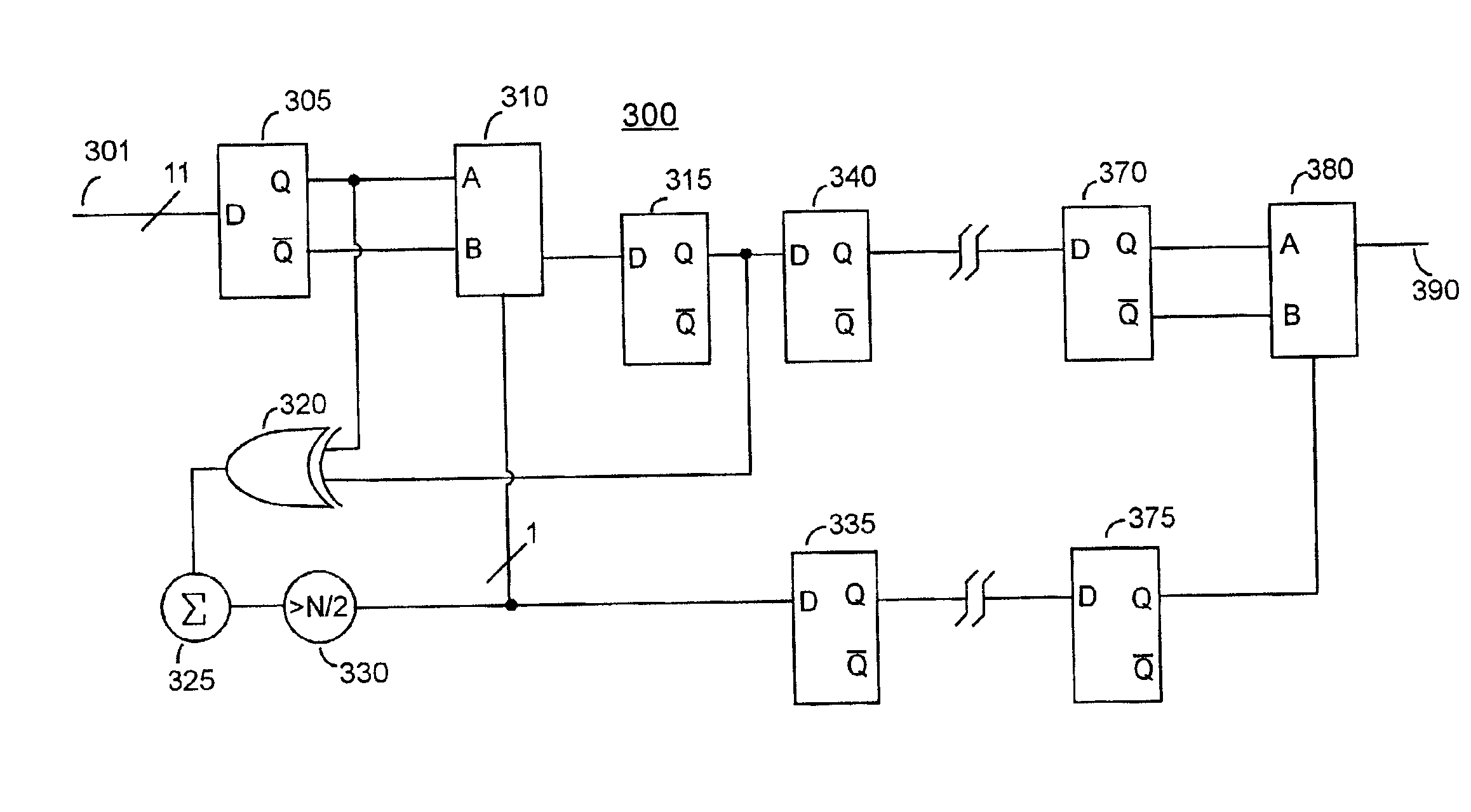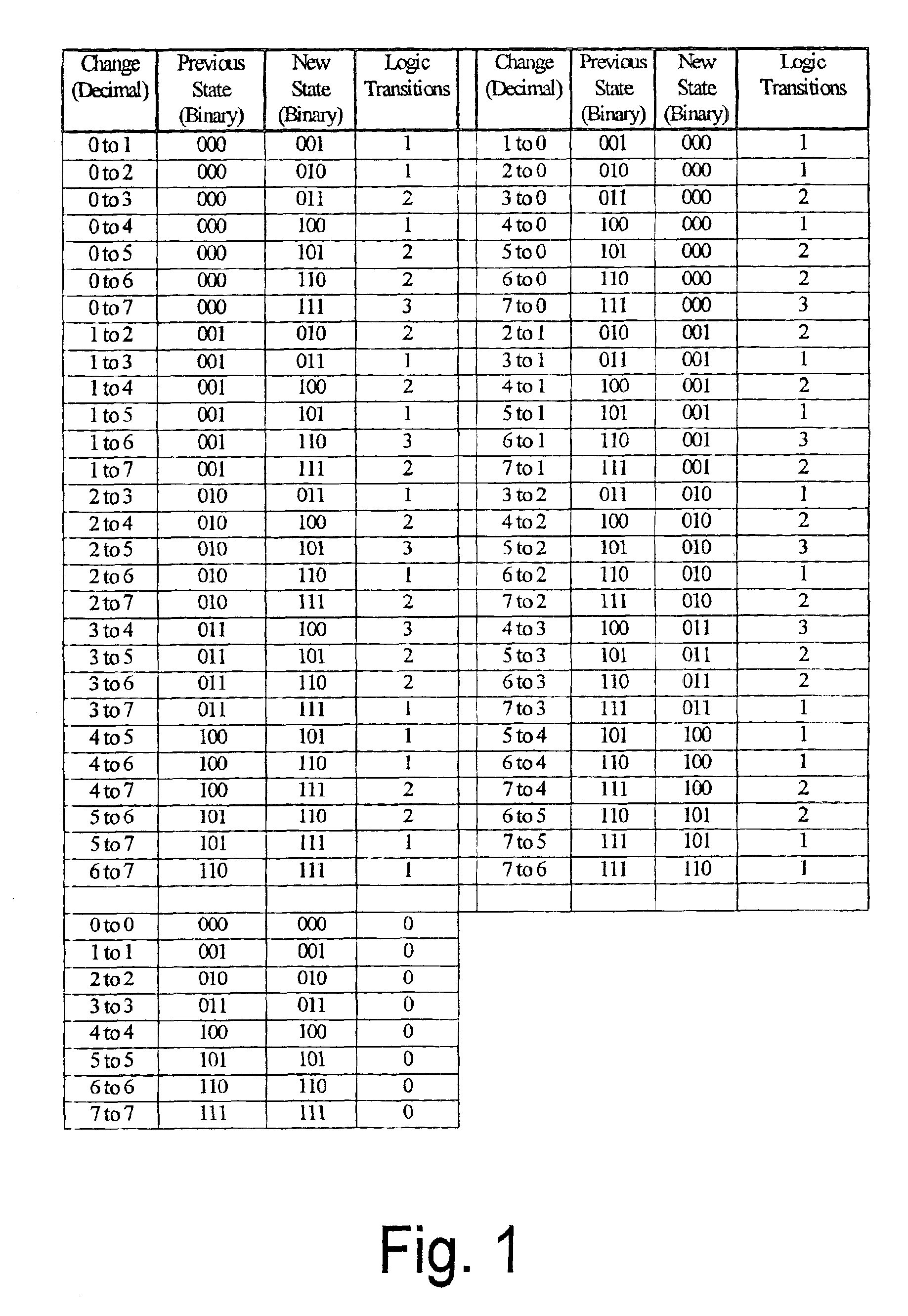Data transformation for the reduction of power and noise in CMOS structures
- Summary
- Abstract
- Description
- Claims
- Application Information
AI Technical Summary
Benefits of technology
Problems solved by technology
Method used
Image
Examples
Embodiment Construction
[0010]CMOS (Complementary Metal-Oxide Semiconductor) technologies provide the capability to design very large digital structures. The main contributor to power dissipation in CMOS circuits is the transition of logic states within the logic gates. The power dissipated in this way is proportional to the number of gates that produce a logic transition per unit time. At high clock rates, this dynamic power dissipation can be the limiting factor for large CMOS designs.
[0011]One method for reducing the dynamic power dissipation in CMOS components is to employ architectures that reduce the number of logic transitions in the implementation of a desired function. An example of this approach is the use of gray code instead of binary code for sequential address generators. Gray code produces only a single logic transition for each sequential change of state, whereas, on average, binary code will produce one-half as many logic transitions as there are bits in the code.
[0012]Statistically, for a...
PUM
 Login to View More
Login to View More Abstract
Description
Claims
Application Information
 Login to View More
Login to View More - R&D
- Intellectual Property
- Life Sciences
- Materials
- Tech Scout
- Unparalleled Data Quality
- Higher Quality Content
- 60% Fewer Hallucinations
Browse by: Latest US Patents, China's latest patents, Technical Efficacy Thesaurus, Application Domain, Technology Topic, Popular Technical Reports.
© 2025 PatSnap. All rights reserved.Legal|Privacy policy|Modern Slavery Act Transparency Statement|Sitemap|About US| Contact US: help@patsnap.com



